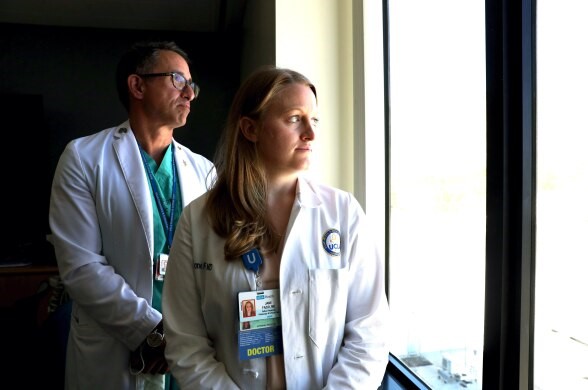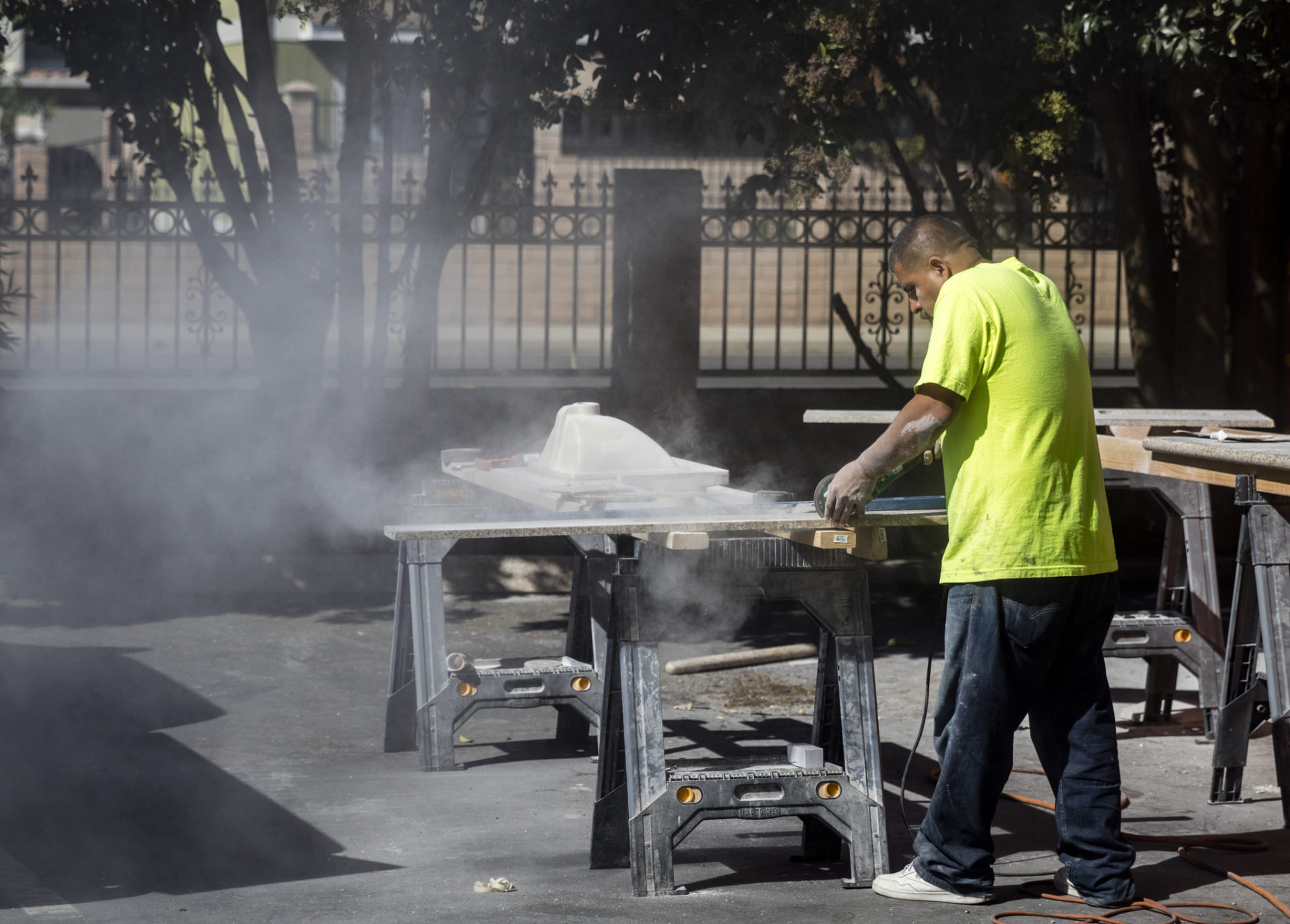Cutting natural and synthetic stone produces dust that can cause lung damage
Physicians at Olive View-UCLA Medical Center (Olive View) identified a cluster of patients with a rare occupational lung disease called pulmonary Silicosis, and played a key role in bringing their cases to light. The patients are predominantly Mexican and Latin American immigrant men and work as stone cutters in the San Fernando Valley, cutting synthetic stone kitchen and bathroom countertops. The remarkable stories about these patients were recently featured in LAist, Public Health Watch, Univision’s news magazine program “Aqui y Ahora” and “AirTalk” on KPCC. The stories are compelling and heartbreaking. The patients are presenting with advanced-stage progressive silicosis that cannot be cured. They are young men in their prime working years, many with young families.
“Thanks be to God, I have been strong, and I spoke with my family,” said patient Gustavo Reyes Gonzalez to Public Health Watch and LAist in an article published on December 2, 2022. “I explained to them … that I had basically a year to live. I just asked my siblings and my mother to start preparing for what was coming and what we were about to go through.”
Olive View has a long history of treating vulnerable patients and educating subsequent generations of doctors. The attending physicians understand the patients’ complex health needs and circumstances and take it upon themselves to evaluate the way they do their work and amend their protocols to better serve the needs of their patient population. Dr. Nader Kamangar, the Chief of the Division of Pulmonary, Critical Care & Sleep Medicine at Olive View-UCLA attributes the ability to identify the patterns in symptomology and the cluster of patients to the Continuity Care Clinic Model, which is unique to this hospital. The Olive View Pulmonary division set up a Continuity Care Clinic Model with Dr. Jane Fazio where patients receive continuous care from a specific physician that is trained to identify and treat this condition. This systemic change in practice required substantial planning to efficiently refer specific patients to a designated physician for additional vetting. Silicosis is difficult to diagnose and is thought of as untreatable. Its symptoms and presentation can mirror many other lung conditions making it challenging to diagnose. A proper diagnosis requires a chest x-ray, CAT scan, often a lung biopsy and a thorough evaluation to exclude–or identify–other coexisting conditions. Dr. Fazio has been the principal clinician involved in this occupational pulmonary continuity clinic and noticed the shared history among her patients who worked in stone cutting.
Dr. Fazio connected with other experts in Occupational Health at the American Thoracic Society Conference where she initially shared some of the findings, and formed a partnership with Dr. Robert Harrison, who founded and directed UCSF’s Occupational Health Services for more than 15 years and directs the respiratory surveillance division at the California Department of Public Health (CDPH). The partnership has led to increased awareness, research collaboration, and a move toward additional advocacy for patients. Much of this work has involved re-energizing existing resources such as the industrial hygienists at Cal/OSHA, national leaders at NIOSH, and the board of the western College of Occupational and Environmental Medicine that could in the long-term help to protect workers and hold employers accountable for unsafe working conditions. A CDPH directory indicates there are over 100 stone fabrication shops in Olive View’s catchment area in the San Fernando Valley and over a thousand within the state. So far, preliminary data shows that over 50 patients have been identified around the state, 30 of which were identified at Olive View. Despite this, they know that there are many other at-risk workers in the County and throughout the State. To this end, Olive View will be the site of the California Artificial Stone Surveillance study in collaboration with CDPH, which should be up and running by early 2023, and aims to improve screening methodologies for this at-risk and structurally vulnerable population.
Dr. Kamangar said, “Our findings underscore the importance of controlling workplace silica exposure to prevent this disabling and untreatable disease which results in slow suffocation of young men who unknowingly inhale these particles. I am concerned that what we are seeing here may represent the tip of the iceberg. We’re seeing more and more workers who are exposed to this material who are still being put at risk. My hope is that our findings will raise awareness amongst local and state leaders who can advocate for and pass legislation that would protect workers from future harm as well as to support those who have already been failed.”
The cluster was identified because physicians were deliberately looking for ways to improve their patient outcomes and fortunately, they are training others to continue doing the same. Look here to learn more about Olive View-UCLA Medical Center.


